What do you do when your RV holding tanks are full and there is no place to dump? Maybe you need to make a quick stop at a campground but don’t want to risk dumping illegally. Or maybe you’re on the road, miles from any services, and desperately in need of relief. To avoid these embarrassing moments or worse, follow these tips for bypassing an RV holding tank.
Table of Contents
Tips on How to Bypass RV Holding Tanks
There are a few ways to avoid dumping your holding tank when you’re in a pinch. Note that these methods are not intended for everyday use as they can damage the valves, seals and pumps on an RV holding tank system. If possible, always make sure there is another option before using one of these tips:
Remove the Vent Pipe – The vent pipe on an RV is connected to the holding tank and will prevent any of the contents from being released into your pipes. If you remove this, then some water may flow out but most of it should stay in the tank.
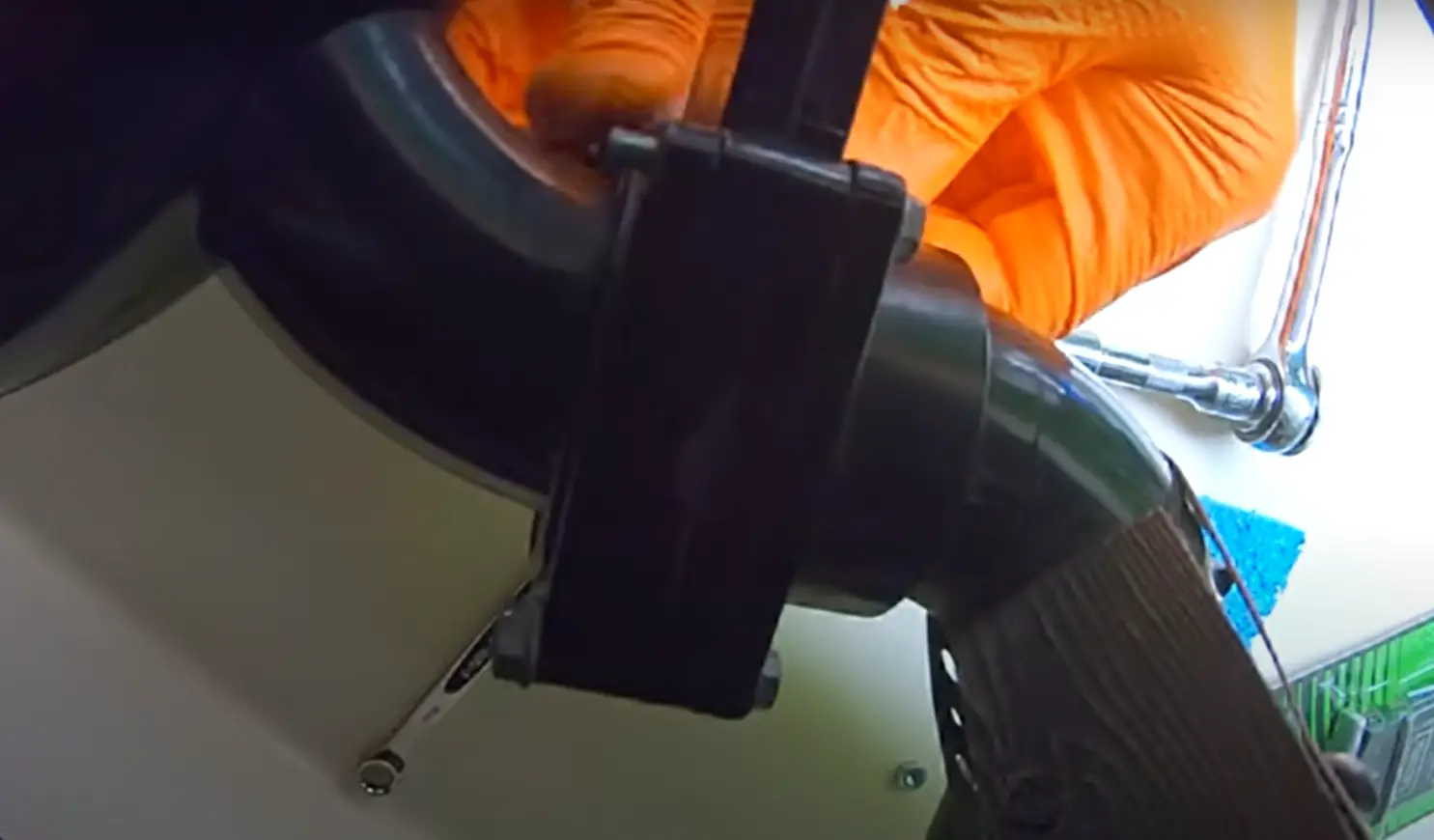
Use Sea Water or Toilet Paper – If you have access to seawater, then simply pour it straight from its container into the tank. Be sure you have sanitized it beforehand so that there is no chance of contamination. The same can be done with a container filled with plain water and some toilet paper to get rid of any unpleasant odor or appearance (just make sure not to flush anything else down your RV toilets!).
Bottles – To avoid damaging valves, use empty bottles with caps. Fill them up and dump them directly into the tank to get rid of any odors or potential damage to your system.
Locate Water Heater Bypass Valve – Unfortunately, the water heater is also connected to your holding tank so if you can find a way of bypassing this then it will empty much faster. You can use a water hose to connect the drain valve on your holding tank directly into your freshwater pipes.
DIY Bypass – If you’re good with tools then it’s possible to create an emergency bypass using PVC pipe, valves and tape which will have any insides flowing out without needing to remove insulation or take off vent or water heater valves.
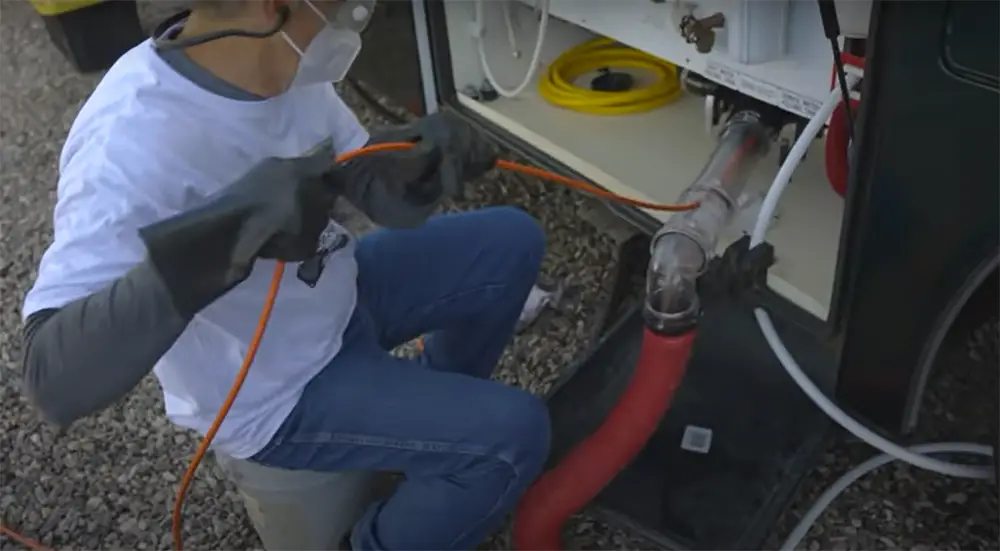
Toilet Paper – The last resort is to use a small amount of toilet paper as this will block up the drain valve and allow you to empty your holding tank.
Connect Bypass Hose – If you’re desperate, then there is no shame in connecting a hose to your holding tank and emptying it out into the ground or other location. If possible try to position this away from anything important like plants or other RV’s.
Install a U-Shaped Fitting – If you’re willing to spend a little money, then consider installing an additional fitting on your RV holding tank system. This will lead the waste away from any water or electrical connections and allow it to be released easily.
Open a Faucet In Your Kitchen Sink – If you’re really stuck and have no other options, then the water from your kitchen sink will drain into your holding tank. This is not a good idea for long term use but can be an option if there are no alternatives nearby.
Drain Tank Contents – If all else fails, then you can try to drain the contents of your holding tank. This should only be done if there are no other options and again is not recommended for long term use as it will damage the system over time.
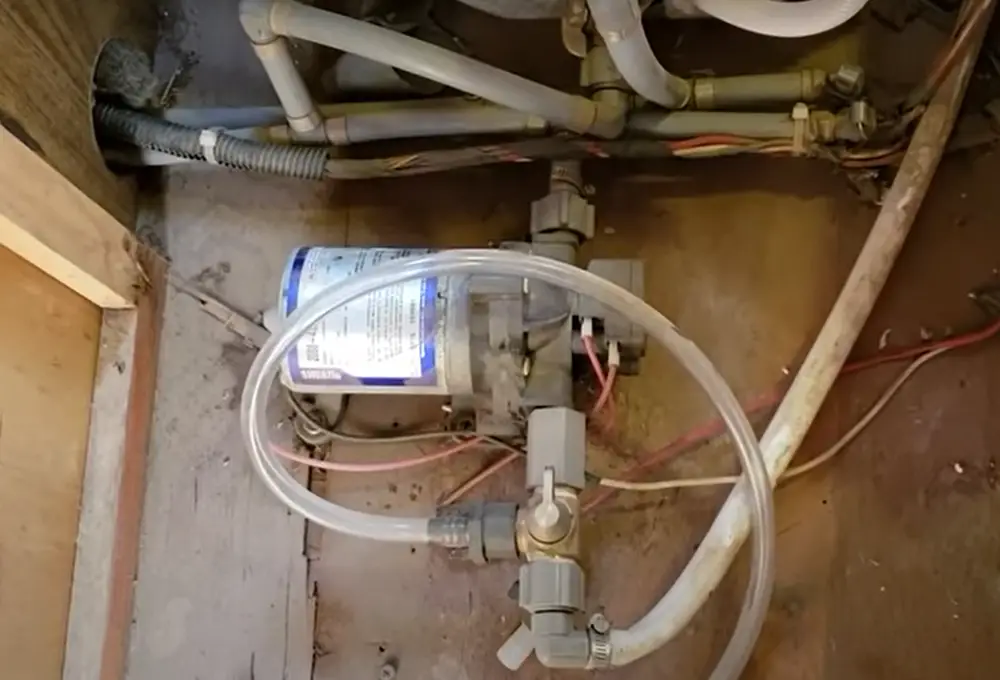
Close By-Pass Valve – Once everything has been emptied out into a proper location, make sure that you close your by-pass valve or any valves leading towards where you dumped waste before continuing on with your trip. It’s also a good idea to check this once every few days while staying in one spot so nothing spills onto the ground accidentally.
Reattach Vent Pipe – Once the last bit of water has been emptied, then you can reattach your vent pipe. This may take a few minutes to refill with air so just leave it alone until everything is back in place and working as normal.
Place an Enzyme Drain Treatment – There are drain treatments available at most stores that sell RV supplies which will thicken up any fluid coming through allowing for easy removal later. They’re usually made from enzymes or bacteria which eat away organic waste matter, including human feces! Follow package directions carefully as they vary by brand.
Use Only Water – This method is best for when you need to get rid of only urine, rather than feces/paper/water etc… Fill up an extra water bottle (or another container) with fresh drinking water from your RV sink faucet then slowly pour it into the top opening on the valve until there’s no more left inside that particular tank. You’ll want to add some enzymes or bacteria before doing this if possible but either way, make sure not to dump any toilet paper in at the same time! Pour out all contents once done and be sure not to mix them so they remain separate while draining alongside each other.
Locate Water Heater Bypass Valve – The water heater bypass valve is located underneath your RV, near the holding tank. You’ll need to shut off power at this point before continuing so it’s best to do it while outside of the vehicle and not in an area where there are moving parts that you could be injured by! Once turned off, locate the valve which looks like a little metal knob/handle. It should be between the hose/pipe that connects your freshwater tank to the kitchen faucet and also where it receives power from underneath. If you have no idea what this looks like or how to access yours, then simply ask a friend who uses their RV more often than you do for assistance!
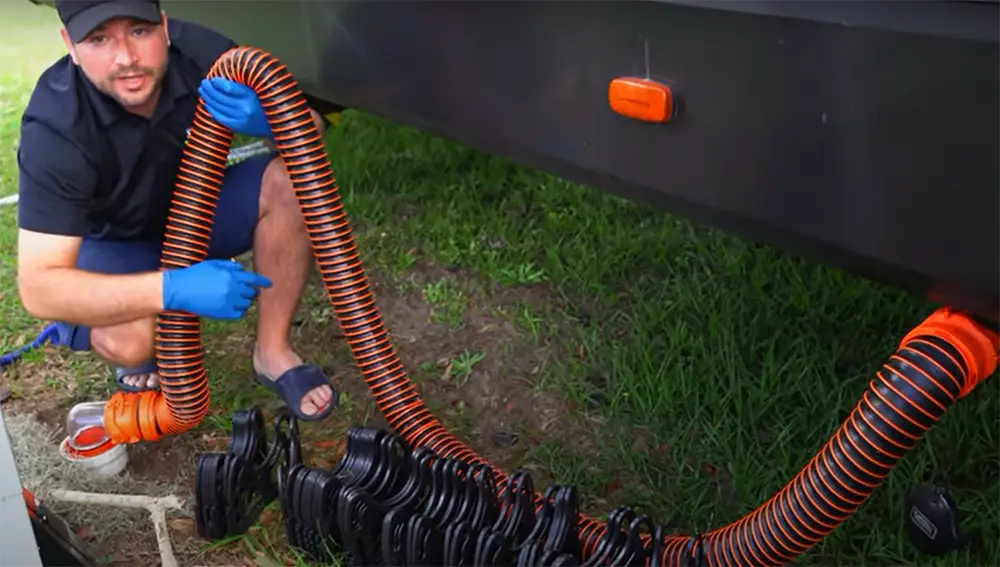
After doing either of these, place a container underneath the hose and turn the knob/handle back to where it was originally (horizontal). Once this is done, water should be pouring out. Depending on how full your blackwater tank was will determine how long you’ll need to leave this method running for so make sure not to do it if it will cause any harm to the environment!
Use RV Antifreeze – This method is best for when you have a full tank but need it emptied even quicker than just using only water. Purchase some standard antifreeze from your local auto parts store which can be found in two forms, either pre diluted or concentrated. The concentration option is cheaper per ounce so purchase that if possible and mix with an equal amount of freshwater before pouring into the blackwater valve’s top opening in order to avoid damaging anything inside. If needed, add enzymes/bacteria after doing this prior to reconnecting whatever cap was covering it originally as well! Again make sure not to dump toilet paper in at the same time when emptying afterwards.
Don’t use too much water – Don’t flush anything other than toilet paper down the toilet because every time you do that, you risk filling up your pipes with additional liquid which will require another dump at some point soon after. If you have a mostly full tank and need to get rid of as much as possible quickly, then follow the steps above for using only water.
Don’t use too little – To avoid any damage occurring from not removing enough waste matter along with whatever else is inside your holding tanks, make sure that you always dump them at least halfway before trying to connect your sewer hose to the dump station’s opening.
Don’t use too much antifreeze – Be sure to read the directions on whatever type of antifreeze you purchase in order to find out how much is safe for specific tank size. Some require only a few ounces while others may need up to half a gallon depending on this factor!
FAQ
Can you bypass a holding tank?
Yes, you can bypass a holding tank in an RV.
Can you remove the black tank from the RV?
Yes, you can remove the black tank from an RV.
Can you drive without a holding tank?
No, it is not advised to drive without a holding tank in your camper or motorhome.
Do I need a holding tank?
Yes, you need a holding tank in your camper or motorhome.
Can I leave the RV if the black water is full?
No, it is not advised to drive an RV without emptying both grey and black tanks first.
Why does the black tank smell so bad?
If your RV smells and you cannot figure out why check if there is a clog in the hose or dump valves.
What are the most common mistakes when emptying an RV’s holding tank?
The most common mistakes people make while emptying their camper’s holding tanks include allowing solids into the drain valve, spilling it on top of a bag instead of inside it and dumping outside designated areas.
What do I need to consider when emptying an RV’s holding tanks?
When you are ready to empty your camper or motorhome, only open the black tank dump valve and close it as soon as possible. You should always use disposable gloves while emptying your RV’s holding tanks to avoid touching anything with your bare hands.
Useful Video: How To Drain RV Holding Tanks & Tips
Final Thoughts
So now you know how to bypass an RV holding tank. It’s a pretty easy thing to do and doesn’t require much effort at all. Knowing how to bypass your RV’s holding tank can save you a lot of time and energy.
Remember to always follow the manufacturer’s guidelines for your RV. This information is only meant to be used as a guide and you should never attempt anything that isn’t listed in your owner’s manual or service manual.
Hopefully, this article answered any questions you may have had about how to bypass an RV holding tank. If not, feel free to comment down below with your additional questions! Remember that all comments are moderated so if you post something offensive it will get removed right away! I want these articles to help people out so please keep it clean 🙂

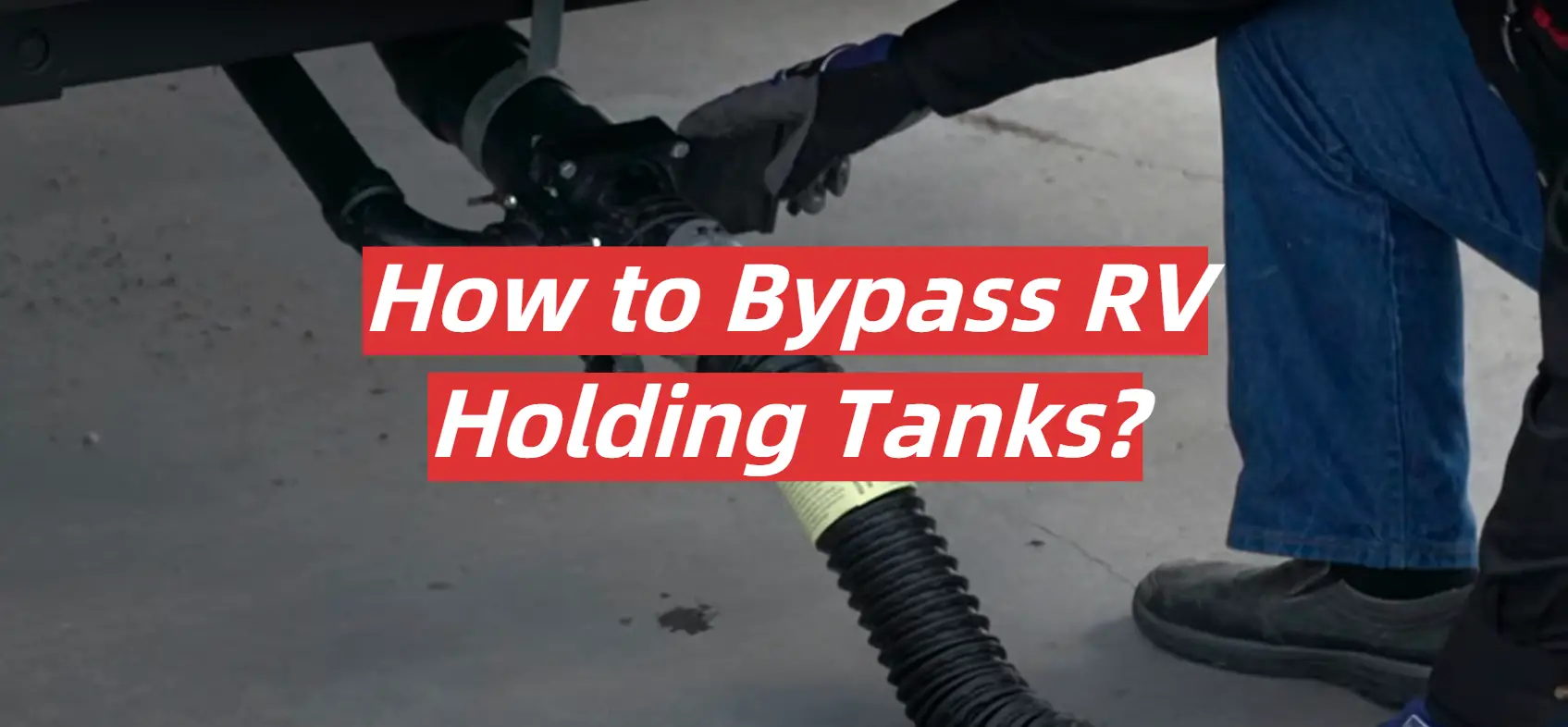
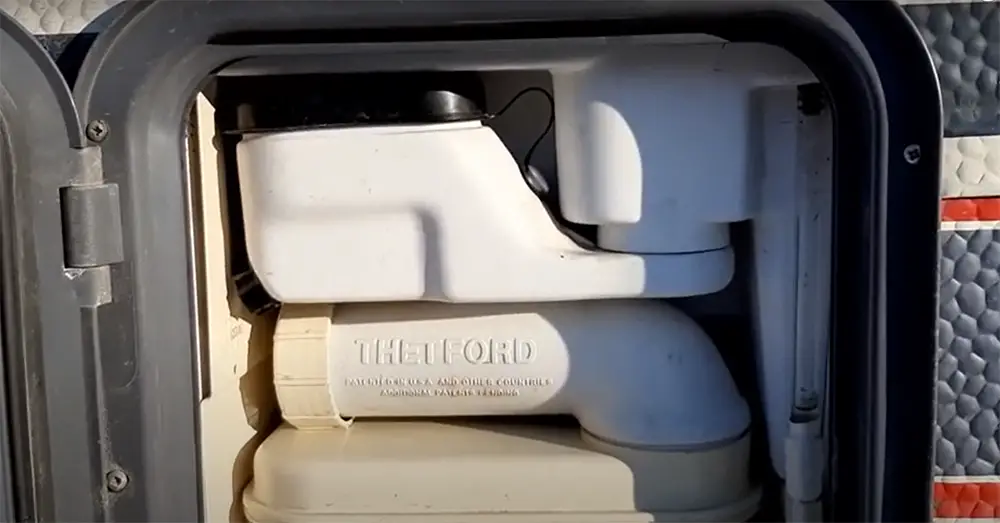
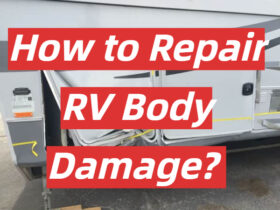
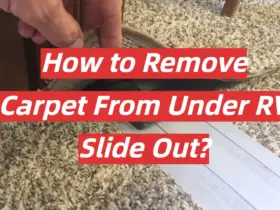
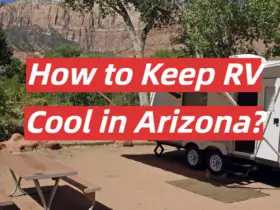
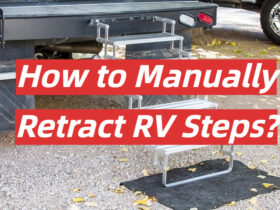
Leave a Reply